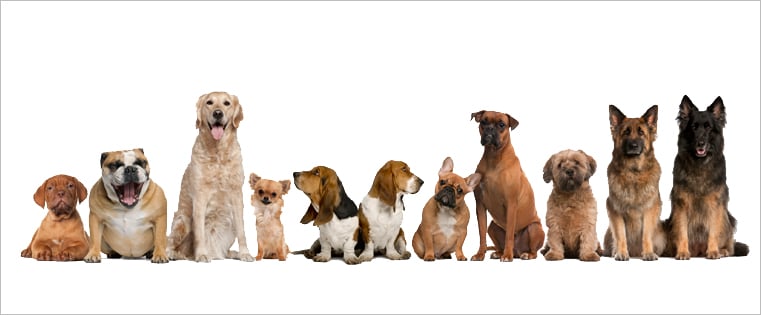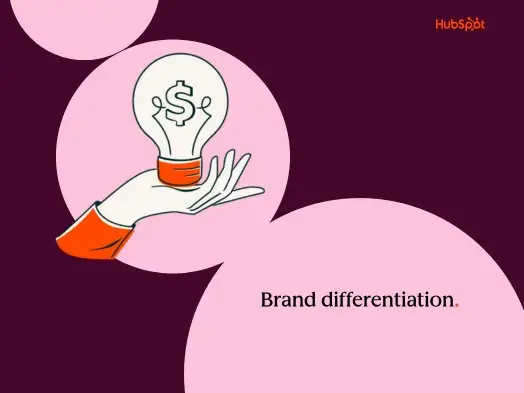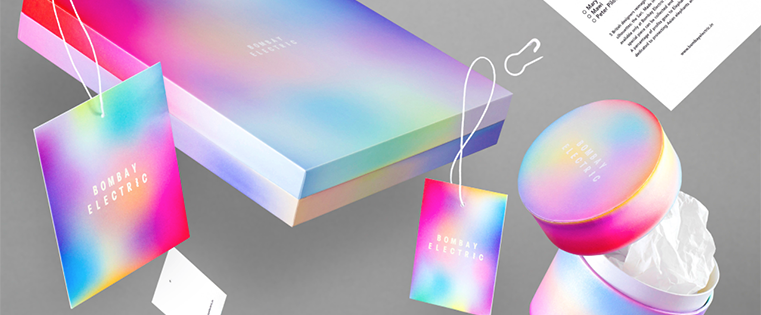1) Apple
If you haven’t heard of Apple then you’ve probably been living under a rock. Steve Jobs had a vision to create technology that would change the world; and it all started in his garage in 1976.
Competing against Microsoft, the largest electronics and computer company at the time, Steve had to put everything into creating new and unique technology to surpass the top dog of the industry. When Apple introduced the iPod, it changed the way people listened to music. Goodbye Walkmans, hello iPod. Followed by the iPhone and the iPad, Apple was turning heads and getting noticed.
Steve Jobs understood that consumers are constantly looking for the next big thing, the next hot trend – and so he gave his audience exactly what they wanted. Along with his incredibly innovative ideas, the always elegant, sleek, and modern approach of Apple’s branding caught everyone’s attention.
Since the 1984 commercial that introduced the new Macintosh computer, Apple has been looking to the future and dreaming big. Their 2014 branding is no different.
By 2010, Apple exceeded Microsoft in sales for the first time in 10 years. People are always yearning for the next technology that can make their life easier, and an Apple ad a day seems to keep the other competition at bay. All it took was a man with a passion for technology and a garage.
2) Ben & Jerry's
Around the same time Steve Jobs was fiddling with electronics in his garage, two friends paid for a $5 correspondence course in ice cream making. A $12,000 investment ($8,000 saved, $4,000 borrowed) later, Ben and Jerry opened their very first ice cream shop at a gas station in Burlington, Vermont.
Once the duo started selling their ice cream in local restaurants and supermarkets, their competition, Haagen-Dazs (the Pillsbury Company), took notice. Haagen-Dazs attempted to hinder Ben and Jerry’s business; but with fresh local (Vermont) milk and cream, thick chocolate chunks, and fresh fruit, any attempt to stop Ben & Jerry’s was futile.
Who can deny homemade ice cream? (I’m lactose-intolerant and still love Ben & Jerry’s!) It’s hard to say no to their colorful, vibrant, and inviting branding. Even though their original logo was in black and white, it still evoked an inviting feel with its hand-drawn, ice cream-covered piano. Their clever and fun flavor names make choosing your ice cream flavor more of a game than a task – “That’s my jam” is a catchy play on words that consumers are unlikely to forget.
.webp?width=640&height=853&name=benjerry%20(1).webp)
Clever names for a couple of Ben and Jerry’s ice cream flavors (Image source: Flickr)
Ice cream is a dessert, a celebration. (Well, it’s good for wallowing or when you watch too much Lifetime, too.) For the most part, though, ice cream embodies happiness and relaxation – all the things you feel when treating yourself. The same feelings are evoked in you when you see the Ben & Jerry’s logo or an advertisement for their delicious sweets. Ta-da! That’s successful branding for you. Ben & Jerry’s knows their customers and how to captivate their audience.
In less than ten years, Ben & Jerry’s Ice Cream made $32 million in sales and $326 million by 1999. From a $5 course in ice cream making, a beloved, everlasting ice cream brand was born. Vermont’s finest? Try World’s finest (in my opinion, anyway).
3) Sam Adams Beer
Brewed in a kitchen in 1984, Samuel Adams craft beer was sold bar-to-bar before joining the ranks of other top dogs, like Labatt and Budweiser.
However, with a four-vessel brewing process, this fresh, domestic craft beer became a game changer for the Boston Beer Company.
In 1984, distributed domestic micro-brewed beers were virtually nonexistent. Samuel Adams was spreading in popularity (primarily by word of mouth) as proven by their continuous increase in sales. They introduced new styles including Boston Ale, Cream Stout, Double Bock, and more.
That 1984 kitchen had become far too small to house the growing success of Samuel Adams.
How did they do it? Their branding strategy is simple – “the mission at Samuel Adams hasn’t wavered or compromised, we're still focused on making the best beer possible and we can't wait for what's to come.”
Their most recent campaign humbly enlightens their consumers on just how many craft beers they actually do make per year.
The company’s passion for beer is what keeps customers coming back. With new seasonal brews and over 50 different varieties, Samuel Adams never stops grabbing the attention of beer lovers. All of their marketing is consistently simple and honest; it’s all “For the Love of Beer,” (a tagline that other breweries probably wish they thought of first).
4) Burt's Bees
Burt Shavitz owned a local honey stand in Maine, and in 1984 Roxanne Quimby (a local artist) began using his extra, unused beeswax to make candles. Within a year, the candle business brought in $20,000. Not long after, Roxanne discovered a recipe for beeswax lip balm in a 19th century farmer’s journal, and in 1991 Burt’s Bees Beeswax Lip Balm was on the shelf.
An all-natural, individually-owned lip balm was a game changer for Burt’s Bees, and was the beginning of a long line of homemade, natural beauty products. By 1999, Burt’s Bees was global.
Their branding really took the spotlight in 2007 when they established “The Greater Good” business philosophy; beauty products that are good for you, good for us, and good for all. Their illustrated imagery and warm color scheme that’s prevalent in their branding evokes the all-natural, personal, inviting feel of the business.
.webp?width=640&height=478&name=burt%20(1).webp)
Burt’s Bees Hand Salve illustrated package design (Image source: Wikipedia)
In an industry overflowing with cool blues, greens, and sometimes even stark white lip balm, and sleek, modern beauty products, Burt’s Bees is a welcomed contrast.
5) CLIF Bar
Gary Erickson was your average, active guy pedaling along a bike path when he realized that the energy bars he brought with him were unappetizing and hard to digest; and he wanted something better.
Most people would just go back to the store and scope out the options, but not Gary. He called on his mother and together they began experimenting with different ingredients until they came up with a recipe concocted of “nutritious, wholesome ingredients to sustain energy.”
Named after his father, Clifford, CLIF Bar was launched in 1992 and was an immediate hit with athletes. Instead of selling out to a larger company, Erickson agreed to remain a private business in 2001 - which turned out to be an amazing business decision for the CLIF Bar Company. With all organic products and a healthy nutrition panel, CLIF Bars were easily becoming the favorite energy bar for athletes or anyone wanting a filling, healthy snack.
Similar to Burt’s Bees’ simple and honest business philosophy, Erickson developed the “Five Aspirations” business model; sustaining “Business, Brands, People, Community, and the Planet.” CLIF Bars also keep allergies in mind with their products, and on their website you can check what you’re allergic to and it will display a list of the products you can have (if you’re allergic to milk, Kit’s organic bars are a great snack).
As many people are becoming interested in sustainability, recycling, and organic products over processed, corporate products, CLIF Bar’s promise of organic and sustainable ingredients, farming, and buildings is lighting the way to better energy bars, better health, and a better food industry.
6) Quest Nutrition
Similar to CLIF Bars, the Quest mission aims to create a healthier version of protein bars already on the shelves.
Protein bars sound healthy, but the majority are filled with sugar and other unnecessary and unhealthy ingredients. A group of people decided to “go on a quest” to create a new kind of protein bar, without junk, but still delicious. Thus, Quest bars were born. In 2010, the same group of people sat around in a kitchen, making protein bars by hand until they landed on a recipe they knew would change the industry forever.
As Quest Nutrition continued to gain attention from body builders and fitness models, they also began outselling their competitors, such as Muscle Milk and Luna protein bars.
With sales rapidly increasing, making the bars in a tiny commercial kitchen wasn’t cutting it anymore. The obvious next step for Quest was to buy equipment and start making them in larger quantities – which they did. They learned that they (along with other protein bar companies) had trouble mixing their ingredients properly in the machines. The industry’s solution was to add sugar to the bars to help the consistency mix well, but the whole point of Quest Nutrition is to be tasty without compromising nutritional value.
Their solution changed the game for protein bars as they decided to build their own equipment to mix the recipes properly instead of adding sugar to save time and money.
Quest Nutrition’s branding may not be extraordinary in the design-sense. Their packaging (from a designer’s perspective) isn’t very “pretty;” but Quest Nutrition knows their audience – and that’s all they need.
They separate themselves by understanding that their audience wants to indulge in their cravings, without the consequences or feeling guilty. Their campaign to “cheat clean,” to eat healthy, but still get the satisfaction of eating delicious foods, embodies what Quest Nutrition is all about.
They really are involved with their audience, and show how much they care about and appreciate their consumers.

Quest Nutrition’s #CheatClean Community board (Image source: Quest Nutrition)
The Quest Nutrition Twitter community is also abuzz with consumers sharing their love for Quest products.


Tweets that include the #CheatClean twitter hashtag (Image source: Kathryn Wheeler’s Twitter feed)
Now protein bars aren’t the only way to cheat clean. This year Quest Nutrition has expanded to chips, pasta, and more – because why can’t “cheating” your diet taste good AND feel good?
7) Chipotle
Denver, Colorado is the home of the first-ever Chipotle, and if you asked Steve Ells in 1993 if he would be the owner of a Mexican fast-food chain, he wouldn’t have believed you. Steve admitted that he never planned for Chipotle to go big; he just wanted a nice place for people to get quality Mexican food in Denver.
Lucky for us, Chipotle is just too delicious for its own good, and the restaurant began to grow quickly. However, the more Steve learned about the fast-food industry, the more he disliked it – so he decided to change it (for his restaurant, anyway).
“Food with integrity” is the main focus of Chipotle’s brand, and emulates all of Steve’s ideals about running his business. He partnered with dedicated ranchers and farmers who raise livestock and grow produce sustainably and responsibly. All the food on Chipotle’s menu is not only delicious, but also naturally made or grown.
Chipotle’s fun, quirky, and handwritten typographical design is an organic, laid-back style that is a glaring (and welcome) contrast to the modern, corporate feel of other fast-food places.
Why is it that hand-drawn design seems to be popular recently? One reason - it’s personal! Nothing conveys that a business cares about interacting with their customers on a human-to-human basis than actually hand-writing your design. Your customers are already attached to your underdog story, and what better way to stay connected with your audience than hand illustrations that show how much time and care you put into your business?
8) Five Guys Burgers and Fries
Another underdog in the food industry is Five Guys.
The story goes that Jerry Murrel wanted a job that kept his family nearby, and, of course, made some money. The solution? Jerry and his sons agreed to take their college funds and open a burger joint.
Competing against McDonald’s and Burger King isn’t an easy task for anyone; their prices really can’t be beat. But Jerry knew that their quality could be (easily) surpassed. With recipes for quality burgers and fries that are delicious beyond compare, Murrel and his sons founded Five Guys Burgers and Fries.
When you think burgers, you picture picnics, barbeques, laid-back parties, and people just sitting around enjoying the food, right? Well that’s exactly the kind of atmosphere Five Guys creates with their branding. Simple red and white picnic table cloth patterns, burlap sacks of peanuts on all the tables, and a sparse menu that offers all the basics take you back to the traditional burger bar ambience.
The fast-food industry is filled with interior-decorated buildings made to look like big city cafes or lounges. Five Guys’ décor is simple, casual, and everything a small burger joint should be – the top dogs don’t really stand a chance against the quality burgers this underdog can whip up.
Yes, McDonald’s is cheaper and faster, and for a fast-paced world that works. However, Five Guys isn’t afraid to tell their customers that they may have to wait longer, because the wait will be worth it for a quality burger.
Five Guys fans are apparently in complete agreement with that business plan because this underdog is quickly making its way up the food chain.
9) Snapchat
It’s no secret that social media has basically taken over the world. When Snapchat was first introduced in 2011 it sparked some interest, but didn’t have the 500+ million users that Facebook had at the time. However, word of mouth spreads quickly in these connected times, and it wasn’t long until a majority of people were snapping selfies.
Popular with teens (and some adults) in an instant, Snapchat easily found its niche audience.
Snapchat provides a peek into the window of whatever a person is doing right at that moment, anywhere in the world at any time. If you’re experiencing something, chances are you want to share it with your family or friends – and thanks to Snapchat, you can share it in an instant. It’s no surprise that as of August 2014, Snapchat has 100 million monthly users.
When it comes to branding, Snapchat has a unique way of marketing itself. There really haven’t been campaigns for Snapchat, but there are campaigns that use Snapchat – which basically promotes their business and Snapchat (without Snapchat having to do a thing).
Just like other social media, businesses use their profiles to attract new leads and delight their customers. Snapchat is no different; just take a gander at these 8 brands rocking Snapchat. If only all underdogs could have a marketing strategy this easy.
10) Blue Apron
Three guys with a love of food and a passion for cooking, what good couldn’t come out of that? Matt Salzberg, IIia Papas, and Matthew Wadiak came together with their love of food to start Blue Apron. The name is a symbol of how beginner chefs and the pros can always learn something new when it comes to the art of cooking.
Blue Apron mixes the idea of food delivery and learning how to cook and creates an entirely new recipe for home-cooked meals – not too shabby for an underdog.
Plated and Family Chef are similar businesses that are just as innovative as Blue Apron, but Blue Apron does it all for a better price. You can’t compete with less than $9 per meal; that’s cheaper than a meal out and you don’t have to leave the comfort of your home.
When you go to the supermarket and cook your own meals, there’s a good chance you end up wasting some of the food you don’t finish or forget to cook before it expires. Blue Apron prides itself on decreasing prep time and reducing waste, saving you both time and money.
With simple, clean branding, its modern and fresh style appeals to any audience. They value home-cooked meals and understand that everyone deserves a delicious meal (even if you’re as bad at cooking as I am).
Ordering take-out or getting pizza delivered will always be an option, but Blue Apron is aiming for (and succeeding in) making dinners healthy, home-cooked, and easy to make. Their branding leaves no room for doubt. They may have started out as an underdog, but Blue Apron is making its way out of the doghouse and into millions of kitchens.
11) Home Depot
Bernie Marcus and Arthur Blank wanted to create a one-stop shop for the DIYers. In Atlanta, Georgia, the first two Home Depot stores opened in 1979. Up until then, people had been shopping at their local hardware stores or other department stores looking for what they needed.
Not only did Home Depot offer more supplies and materials than the average hardware store, they were also staffed with employees who were willing and able to help customers with all of their construction or DIY-project questions or problems. To enable themselves to provide the top tools to their customers, they partnered with brands including Ryobi, Ridgid, Behr, LG, and others.
Partnering with these other name-brand products that customers rely on helped Home Depot earn the trust of those customers. Getting a solid reputation is definitely the first step in marketing your business.
Home Depot’s mission is to be a one-stop shop for DIY projects, and their branding and marketing are right on the ball. With photographs of a home makeover to ads for the latest drills or lawn mowers, Home Depot makes DIY projects look easy and attainable.
Their slogan, “Let’s do this,” encompasses how Home Depot is there to help customers complete their projects or renovations or whatever the customer is working on.
Whether it’s painting a wall, completely redecorating a kitchen, or adding on another room, every homeowner has a list of projects – and Home Depot understands. Their video reminds the customers that even though their “bucket” list may be long, with Home Depot you can start checking off those projects easily. What more could a homeowner want, or need?
So Why Place Such an Emphasis on Underdog Brands?
Underdogs are, and always will be, relatable. Life is full of ups and downs, and people are continuously finding new obstacles in their way – underdogs are always a beacon of hope, a reminder that sometimes you can beat the odds.
While some of these businesses have become multi-million dollar corporations, their branding still remains loyal to their underdog beginnings – and that is the kind of strategy that allows their branding to successfully stand out in a crowded space. Want to get a head start on your own branding for 2015? Download our buyer persona guide to start developing a branding strategy around your target audience.
.png?width=112&height=112&name=Image%20Hackathon%20%E2%80%93%20Horizontal%20(64).png)



![10 creative company profile examples to inspire you [+ 8 templates]](https://53.fs1.hubspotusercontent-na1.net/hubfs/53/Operation-everest-Company-Profile-1-20250916-5779688.webp)
![14 Best Corporate Social Responsibility Examples [+Trends]](https://53.fs1.hubspotusercontent-na1.net/hubfs/53/corporate-social-responsibility-examples.png)


